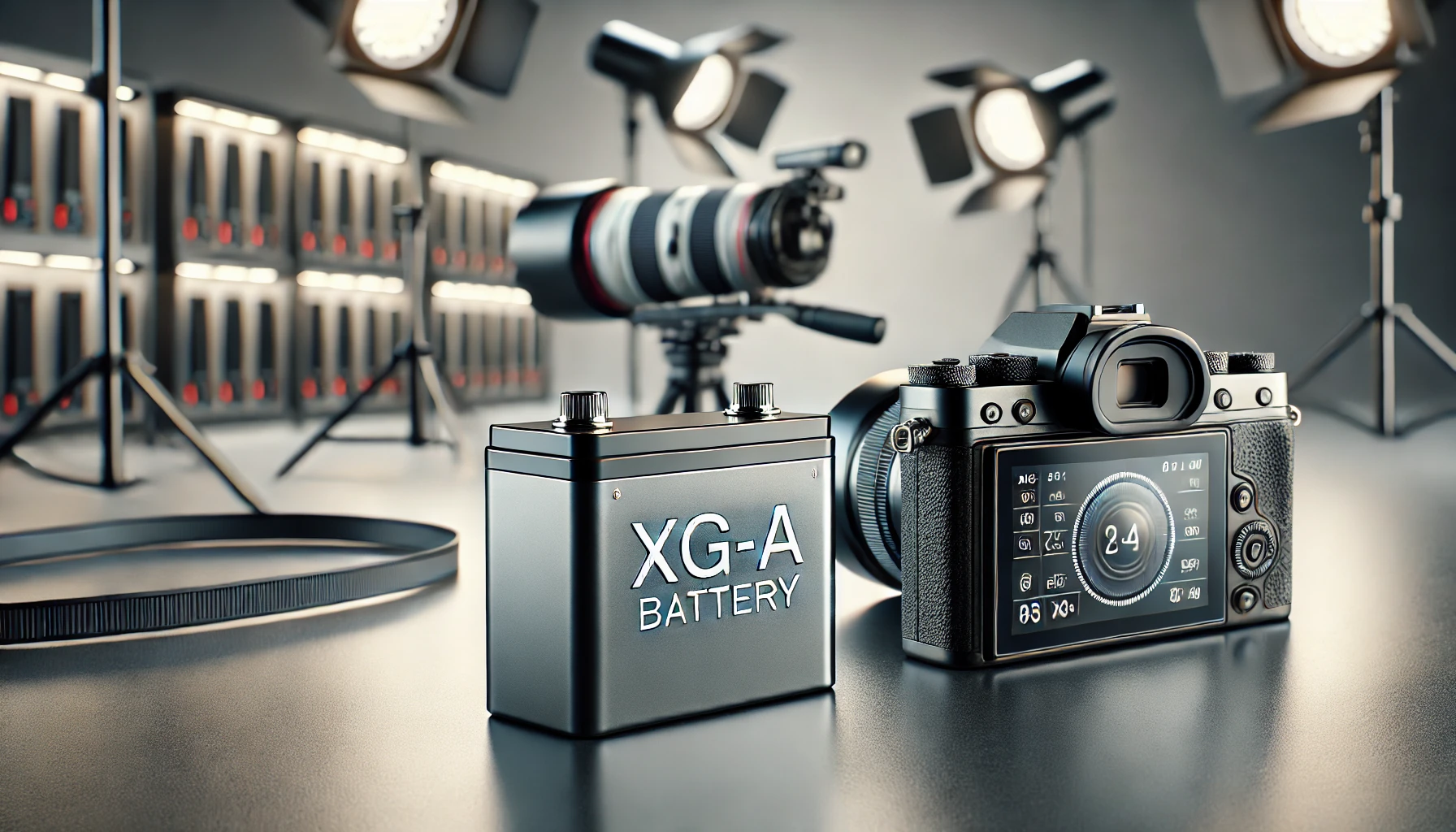Technology
How to Do the Baby AI Filter: A Step-by-Step Guide

Contents
- 1 Introduction to the Baby AI Filter
- 2 Choosing the Right App or Software
- 3 Downloading and Installing the App
- 4 For iOS Devices
- 5 For Android Devices
- 6 For Desktop
- 7 Setting Up Your Profile
- 8 Editing and Saving Your Baby AI Images
- 9 Troubleshooting Common Issues
- 10 Filter Not Loading Properly
- 11 Poor Image Quality
- 12 App Crashing
- 13 FAQ and Additional Resources ( How to Do the Baby AI Filter )
- 14 Creative Ideas and Uses for the Baby AI Filter
Introduction to the Baby AI Filter
The Baby AI Filter has surged in popularity, capturing the imagination of social media users around the globe. This innovative filter utilizes advanced artificial intelligence technology to transform adult faces into baby-like versions. The appeal lies not only in its ability to provide a humorous and endearing rendition of oneself but also in the impressive accuracy and detail of the transformations. By adjusting facial features such as the size of the eyes, the roundness of the face, and the smoothness of the skin, the Baby AI Filter creates a remarkably realistic baby version of its users.
One of the key reasons for its viral status is the sheer entertainment value it offers. Users delight in sharing their baby-faced images on various social media platforms, often accompanied by playful captions and comments. This trend has seen a significant uptick, with celebrities and influencers joining in, further amplifying its reach. The Baby AI Filter has not only become a source of amusement but also a creative tool for content creators. From comparing their baby-filtered faces with actual childhood photos to creating humorous before-and-after scenarios, people have found numerous ways to engage with and enjoy this technology.
Moreover, the Baby AI Filter represents a broader movement towards the integration of AI in everyday applications. Its success demonstrates the potential of AI to create engaging and interactive experiences, making advanced technology accessible and enjoyable for a wide audience. As we delve deeper into the specifics of how to do the baby AI filter, it becomes evident that this trend is more than just a fleeting social media fad. It signifies a growing interest in AI-driven creativity and the endless possibilities it holds for future innovations.
Choosing the Right App or Software

The growing popularity of the Baby AI Filter has led to a proliferation of apps and software offering this feature. Selecting the right app or software for your needs can enhance your user experience and ensure the best results. Among the most popular options are Snapchat, FaceApp, and several emerging platforms, each with its own unique advantages and drawbacks.
Snapchat is perhaps the most well-known platform for applying the Baby AI Filter. One of its main advantages is its ease of use; the interface is intuitive, making it simple for users of any technical skill level to navigate. Additionally, Snapchat offers a range of other filters and features, adding versatility to the app. However, one downside is that some advanced features may require in-app purchases or a subscription to Snapchat’s premium services.
FaceApp is another popular choice, known for its high-quality AI filters. FaceApp allows users to apply the Baby AI Filter with remarkable accuracy, often producing more realistic results than other platforms. The app is also user-friendly and provides a variety of additional editing tools. Nevertheless, the free version of FaceApp has limited features, and users may need to upgrade to a paid version to access the full suite of tools and filters.
Emerging platforms such as Reface and Avatoon are also gaining traction. These apps offer innovative features and often come with a lower price point. Reface, for example, specializes in face-swapping technology, while Avatoon focuses on creating personalized avatars. While these platforms provide unique capabilities, they may not yet offer the same level of refinement or comprehensive feature set as Snapchat or FaceApp.
When choosing the best app or software for utilizing the Baby AI Filter, consider factors such as ease of use, cost, and additional features. Evaluate whether you require a simple, straightforward application or a more robust tool with advanced editing capabilities. By carefully assessing your needs and preferences, you can select the most suitable platform to achieve the desired effects with the Baby AI Filter.
Downloading and Installing the App

To get started with the baby AI filter, the first step involves downloading and installing the appropriate app or software on your device. The process varies slightly based on the type of device you are using, whether it be iOS, Android, or desktop. Below, we provide a detailed guide for each platform to ensure a smooth installation.
For iOS Devices
1. Open the App Store on your iPhone or iPad.
2. In the search bar, type the name of the app you need to use the baby AI filter (e.g., “Baby Face Filter App”).
3. Locate the correct app in the search results and tap the “Get” button.
4. You may be required to authenticate your Apple ID. Follow the on-screen instructions to complete the download.
5. Once the app is downloaded, tap “Open” to launch it.
For Android Devices
1. Open the Google Play Store on your Android device.
2. Use the search bar to look for the baby AI filter app by typing its name (e.g., “Baby Face Filter App”).
3. Find the correct app from the list of results and tap “Install.”
4. The app will begin downloading. Upon completion, tap “Open” to start using it.
For Desktop
1. Visit the official website of the baby AI filter software.
2. Navigate to the download section and select the version compatible with your operating system (Windows or macOS).
3. Click the download button to save the installer file to your computer.
4. Locate the downloaded file and double-click it to begin the installation process.
5. Follow the on-screen instructions to complete the installation. Once installed, launch the application.
During the installation, you might encounter potential issues such as lack of storage space or compatibility problems. Ensure your device meets the minimum system requirements and has sufficient storage. If the installation freezes or fails, try restarting your device and attempting the process again. For persistent issues, consult the app’s official support page or customer service for troubleshooting assistance.
Setting Up Your Profile

Before diving into the fun of learning how to do the baby AI filter, the initial step is to set up your user profile within the app. This foundational step ensures that all functionalities, including the baby AI filter, are accessible and optimized for use. Begin by downloading and installing the app from your device’s app store. Upon launching the app, you will be prompted to create an account. This often involves providing basic information such as your name, email address, or phone number.
After inputting your details, you will be required to verify your email or phone number. Verification is crucial as it secures your account and allows you to recover it in case of any issues. Typically, the app will send a verification code to your email or phone, which you will need to enter into the app to complete the verification process.
Once your account is verified, the next step involves customizing your profile settings. This includes adding a profile picture, setting up a username, and configuring privacy settings according to your preferences. Customizing your profile not only personalizes your experience but also enhances how you interact within the app’s community.
One critical aspect to address during the setup is allowing the necessary permissions. The baby AI filter, like many other features, requires access to your device’s camera and photo gallery. When prompted, ensure you grant these permissions to enable the app to function correctly. Without camera access, the app won’t be able to capture your photos or apply the baby AI filter.
By carefully following these steps to set up your profile, you pave the way for a seamless and enjoyable experience with the baby AI filter. A well-configured profile ensures you make the most out of the app’s features while keeping your account secure and personalized.
The process of applying the Baby AI Filter to your photos or videos is straightforward, but achieving the best results requires attention to detail. To begin with, ensure you have the app that supports the Baby AI Filter downloaded and installed on your device. Open the app and navigate to the filter section, typically marked by a magic wand or similar icon. Within the filter library, locate the Baby AI Filter, often found under the ‘trending’ or ‘popular’ categories.
Once you’ve selected the Baby AI Filter, you can either capture a new image or video or upload one from your device’s gallery. For new captures, position the subject’s face in the center of the frame, ensuring that it is well-lit and free from obstructions. Good lighting is crucial for optimal filter performance as it allows the AI to accurately detect and transform facial features. If you choose to upload a pre-existing photo or video, select one where the subject’s face is clearly visible and similarly well-lit.
After selecting or capturing the image, the Baby AI Filter will automatically apply the transformational effect, turning adult faces into cherubic baby versions. Some apps may allow slight adjustments, such as tweaking the intensity of the filter or refining facial features. Experiment with these options to achieve the desired look.
For the best results, consider the quality of your photos or videos. Higher resolution images generally yield better outcomes as the AI has more detail to work with. Additionally, ensure that the subject’s face is looking directly at the camera and is not obscured by hair, hands, or other objects. This direct, unobstructed view enables the AI to perform the transformation more accurately.
Lastly, don’t hesitate to try different angles and expressions. Sometimes, a slight tilt of the head or a different facial expression can produce a more charming baby-faced result. By following these guidelines, you can master how to do the Baby AI Filter and create adorable, share-worthy images and videos.
Editing and Saving Your Baby AI Images

Once you have generated your Baby AI images, you might want to make some additional adjustments to perfect the final result. Most Baby AI filter applications offer a variety of editing tools that allow you to enhance your images further. Common tools include options to adjust brightness, contrast, saturation, and sharpness. These adjustments can help you achieve the desired look and feel for your image, ensuring that it stands out.
In addition to basic adjustments, many applications also provide creative tools such as text overlays, stickers, and frames. Adding text can be an excellent way to personalize the image, whether you want to include a name, a date, or a fun caption. Stickers and frames can add a playful element to your Baby AI images, making them more engaging and appealing. Typically, these features are accessible through an intuitive user interface, allowing you to drag and drop elements onto your image seamlessly.
After you have made all your desired edits, it is crucial to save your work. Most Baby AI filter apps offer straightforward options to save your edited images directly to your device. Look for a save button, often represented by a disk icon, to store the image in your photo gallery. Additionally, many applications provide direct sharing options that enable you to post your Baby AI images on social media platforms like Instagram, Facebook, and Twitter without leaving the app. This convenience allows you to share your creations with friends and family instantly.
By following these steps, you can make sure that your Baby AI images are edited to perfection and easily saved or shared. The combination of basic and creative editing tools ensures that you have all the resources you need to create memorable and personalized images.
Troubleshooting Common Issues
When using the Baby AI Filter, users may occasionally encounter various issues which can hinder their experience. Understanding these common problems and their solutions can help ensure a smooth and enjoyable process. Below, we will address some of the most frequently encountered issues and offer practical solutions.
Filter Not Loading Properly
If the Baby AI Filter is not loading properly, the problem may stem from several sources. First, ensure that your internet connection is stable and strong. A weak connection could prevent the filter from loading correctly. Additionally, check if your app is updated to the latest version, as outdated software may cause compatibility issues. If the problem persists, try restarting your device or uninstalling and reinstalling the app.
Poor Image Quality
Poor image quality when using the Baby AI Filter can be frustrating. To optimize the quality, start by ensuring that your original image is high-resolution. Low-quality images can affect the final result of the filter. Also, check the app settings to see if there are options to enhance image output. If the issue continues, consider using a different photo to see if the problem is specific to the initial image.
App Crashing
An app that crashes frequently can be inconvenient. If the Baby AI Filter app is crashing, begin by checking your device’s available storage. Low storage space can cause apps to malfunction. Clearing the app’s cache and data can also help resolve this issue. If the app still crashes, make sure your device’s operating system is updated and compatible with the app. Contacting customer support can provide further assistance if needed.
FAQ and Additional Resources ( How to Do the Baby AI Filter )
For additional help, users can refer to the following frequently asked questions:
- Why is my filter not applying correctly? Ensure that your app is updated and your internet connection is stable.
- How can I improve the filter’s performance? Use high-resolution images and check app settings for optimization options.
- What should I do if the app keeps crashing? Check for available storage, clear cache, and ensure your device’s OS is updated.
For further assistance, consider reaching out to customer support or visiting user forums where you can find community-driven solutions to common issues. These platforms often provide valuable insights and troubleshooting tips from other users who may have faced similar problems.
Creative Ideas and Uses for the Baby AI Filter
The Baby AI Filter has captured the imagination of users worldwide, offering endless possibilities for creativity beyond simple amusement. Leveraging this innovative filter can result in engaging and memorable content. Here are some inventive ways to utilize the Baby AI Filter to its fullest potential:
1. Baby-Themed Photo Albums: One popular application is the creation of baby-themed photo albums. Imagine transforming all your friends and family members into adorable infants and compiling these images into a nostalgic album. This can serve as a unique gift or a delightful keepsake, immortalizing moments in a whimsical manner.
2. Funny Comparison Posts: Another engaging idea is to create funny comparison posts. Generate a before-and-after series where individuals are shown in their current state followed by their baby-filtered versions. This can be particularly amusing when applied to celebrities or well-known public figures, offering a humorous twist that is sure to captivate your audience.
3. Marketing and Branding: The Baby AI Filter can also be a powerful tool in marketing and branding strategies. Brands can use the filter to create playful and relatable content that resonates with a broader audience. For instance, a company could introduce a “baby version” of their mascot or even feature baby-filtered employees in promotional materials. This approach can humanize the brand and foster a stronger connection with consumers.
Numerous viral examples highlight the filter’s potential. For instance, social media challenges where users post their baby-filtered images have seen widespread participation and engagement. User-generated content of this nature often garners significant attention, making it a valuable asset for boosting visibility and interaction on digital platforms.
By exploring these creative avenues, you can maximize the impact of the Baby AI Filter, transforming ordinary images into extraordinary content that delights, entertains, and engages your audience.
Before Ending, I’ve noticed your interest in Our Blog. We have covered the topic “How to Cancel Spectrum Internet Without Calling: A Step-by-Step Guide,” which you can explore on our blog.
Post Disclaimer
The information contained in this post is for general information purposes only. The information, including images, is provided by How to Do the Baby AI Filter: A Step-by-Step Guide, and while we endeavor to keep the information accurate, we make no representations or warranties of any kind, express or implied, about the completeness, accuracy, reliability, suitability, or availability with respect to the website or the information, products, services, or related graphics contained on the post for any purpose. Please note that images used in this post may be included for entertainment purposes and do not necessarily represent factual or real-life scenarios.
Technology
What is XG-A Battery? Exploring Its Use in Photography and Advanced Energy Storage

Contents
- 1 Introduction to XG-A Battery
- 2 XG-A Battery in Vintage Photography
- 3 XG-A Battery as Advanced Energy Storage Technology
- 4 Benefits of Advanced XG-A Battery Technology
- 5 Quick Tips for Choosing XG-A Batteries
- 6 Pros and Cons of XG-A Battery Technology
- 7 Key Terms in XG-A Battery Technology
- 8 Highlighted Statistics on Advanced XG-A Battery Technology
- 9 Comparison: S76 Batteries in Photography vs. Advanced XG-A Batteries in Energy Storage
- 10 Frequently Asked Questions
- 11 Conclusion
Introduction to XG-A Battery
The XG-A battery has two main applications: powering vintage Minolta XG-A cameras and representing a new type of advanced energy storage solution. Each context offers unique uses, with the XG-A battery in photography providing essential power for 35mm cameras, while its modern counterpart addresses current demands for high-efficiency energy storage in electronics, electric vehicles, and renewable systems.
XG-A Battery in Vintage Photography
Minolta XG-A Camera Battery Requirements
The Minolta XG-A, a popular 35mm SLR camera from the early 1980s, relies on the S76 battery to power its electronic functions:
- Battery Type: Requires two 1.5V S76 silver oxide cells.
- Functions Powered: The batteries enable the camera’s light meter and electronic shutter functions.
- Availability: S76 batteries are commonly available, suitable for various electronic devices.
For vintage camera enthusiasts, understanding these requirements is crucial to maintaining and using the Minolta XG-A.
XG-A Battery as Advanced Energy Storage Technology
In recent years, XG-A battery has come to denote an advanced type of battery technology designed for modern energy needs. These batteries offer improved energy density, life cycles, and environmental friendliness.
Key Features of Advanced XG-A Batteries
- High Energy Density: Stores more energy in a compact design, ideal for limited-space devices.
- Extended Life Cycle: Withstands more charge-discharge cycles, reducing replacements.
- Fast Charging Capability: Allows for quicker charging times for enhanced convenience.
- Enhanced Safety: Built-in protections against overheating and short circuits.
- Eco-Friendly Materials: Uses more sustainable components, reducing environmental impact.
These features make advanced XG-A batteries appealing for applications that require sustainable, long-lasting power solutions, such as electric vehicles, renewable energy storage, and portable electronics.
Benefits of Advanced XG-A Battery Technology
The modern XG-A battery offers several advantages over traditional lithium-ion batteries:
- Sustainability: Eco-friendly components align with global sustainability goals.
- Efficiency in Power Storage: High energy density ensures powerful, compact solutions.
- Cost Savings Over Time: Extended life cycle reduces the need for frequent battery replacements.
Quick Tips for Choosing XG-A Batteries
- For Photography: Ensure you have S76 batteries on hand if using a Minolta XG-A camera.
- For Energy Storage Needs: Look for XG-A batteries if seeking high-density, eco-friendly options.
- Check Compatibility: Confirm battery type and voltage requirements for your specific device.
Pros and Cons of XG-A Battery Technology
| Pros | Cons |
|---|---|
| High energy density and compact size | Potentially higher initial cost |
| Eco-friendly materials | Limited availability in some markets |
| Long life cycle and reduced replacements | Not fully established in all applications |
Key Terms in XG-A Battery Technology
- Energy Density: The amount of energy stored in a given volume or mass of battery.
- Life Cycle: Number of charge-discharge cycles a battery can endure before performance declines.
- Eco-Friendly Components: Materials and designs that have a lower environmental impact.
Highlighted Statistics on Advanced XG-A Battery Technology
- Energy Density Improvement: Advanced XG-A batteries are estimated to offer up to 30% more energy density compared to lithium-ion batteries.
- Charge-Discharge Cycles: Designed to endure up to 2,000 cycles, extending battery life significantly.
- Carbon Footprint Reduction: Estimated 20% lower carbon emissions in production compared to traditional batteries.
Comparison: S76 Batteries in Photography vs. Advanced XG-A Batteries in Energy Storage
| Feature | S76 Battery (Photography) | Advanced XG-A Battery (Energy Storage) |
|---|---|---|
| Application | Powers vintage Minolta XG-A camera | Used in modern devices and renewable systems |
| Energy Density | Standard for single-use batteries | High, suitable for space-efficient applications |
| Life Cycle | Single-use, replace when depleted | Extended, up to 2,000 cycles |
| Eco-Friendliness | Standard battery disposal required | Uses sustainable materials, lower environmental impact |
Frequently Asked Questions
What is the purpose of an XG-A battery in photography?
The XG-A battery refers to S76 batteries used in Minolta XG-A cameras, powering essential functions like the light meter and shutter.
How is XG-A battery technology different from traditional lithium-ion batteries?
Advanced XG-A batteries offer higher energy density, extended life cycles, and eco-friendly materials, making them more efficient and sustainable.
Are XG-A batteries widely available?
S76 batteries for the Minolta XG-A camera are commonly available, while advanced XG-A energy storage solutions are emerging but may not be as accessible in all markets.
Can I use any other battery in place of an S76 for the Minolta XG-A camera?
It is best to use S76 or equivalent 1.5V silver oxide batteries for optimal performance in Minolta XG-A cameras.
Conclusion
The XG-A battery serves distinct purposes depending on the context. For vintage photography, it powers the Minolta XG-A camera, while in modern energy storage, it represents a next-generation battery solution with high energy density and sustainability benefits. Understanding these applications allows users to appreciate both the historical and contemporary value of the XG-A battery.
Post Disclaimer
The information contained in this post is for general information purposes only. The information, including images, is provided by What is XG-A Battery? Exploring Its Use in Photography and Advanced Energy Storage, and while we endeavor to keep the information accurate, we make no representations or warranties of any kind, express or implied, about the completeness, accuracy, reliability, suitability, or availability with respect to the website or the information, products, services, or related graphics contained on the post for any purpose. Please note that images used in this post may be included for entertainment purposes and do not necessarily represent factual or real-life scenarios.
Technology
What is APL66K? Amazon’s Framework for Voice and Visual Integration

Contents
Introduction
APL66K is an advanced framework developed by Amazon within the Alexa Presentation Language (APL) ecosystem, aimed at enhancing user experiences on Alexa-enabled devices. By integrating voice commands with interactive visual content, APL66K allows developers to create immersive applications on platforms like the Amazon Echo Show and Fire TV. With streamlined syntax for data handling and cross-industry adaptability, APL66K is a key tool in crafting engaging, voice-activated user interfaces.
Key Features of APL66K
1. Streamlined Syntax for Data Processing
APL66K employs an array-based coding style that enables concise and efficient programming. This streamlined syntax is particularly useful for data-intensive tasks common in artificial intelligence (AI) and data science, allowing developers to create complex, responsive applications with less code.
2. Integration of Voice and Visuals
One of APL66K’s standout features is its ability to combine voice commands with dynamic visuals. This integration supports an immersive user experience by providing real-time visual feedback in response to voice interactions, making it especially suitable for Alexa-enabled devices with screens.
3. Cross-Industry Applications
APL66K’s efficient data processing and handling make it adaptable across a variety of industries, including finance, healthcare, and logistics. It’s commonly used for tasks like predictive analytics, inventory management, and data visualization, allowing companies to optimize their operations through interactive, voice-driven applications.
Learning and Implementation
To support developers, Amazon offers comprehensive tutorials and documentation to help integrate APL66K into Alexa skills. This support allows developers to design and implement skills that merge voice interactions with visual elements, contributing to the next generation of user interfaces.
Challenges and Future Prospects
While APL66K is a powerful tool, its unique syntax may pose a learning curve for developers new to array-based coding. However, Amazon’s commitment to expanding APL66K’s capabilities, including potential AI integration and user interface improvements, highlights its long-term value in interactive voice experiences.
Pros and Cons of APL66K
| Pros | Cons |
|---|---|
| Streamlined coding for efficient data processing | Array-based syntax may have a learning curve |
| Enhances user engagement with voice-visual integration | Limited to Alexa-enabled devices with screens |
| Adaptable across various industries | Full capabilities require technical expertise |
| Supported by extensive Amazon documentation and tutorials | Specific to Amazon’s Alexa ecosystem |
Benefits of Using APL66K
- Enhanced User Engagement – By combining voice commands with visual feedback, APL66K enables more immersive experiences on Alexa-enabled devices.
- Efficient Data Handling – Its array-based syntax simplifies complex programming, making it efficient for data-driven applications.
- Cross-Industry Relevance – APL66K supports applications across finance, healthcare, logistics, and other industries, helping optimize processes.
- Continuous Amazon Support – Amazon provides detailed guides and resources, facilitating a smoother learning process for developers.
- Future-Ready Framework – With potential AI integration and UI enhancements on the horizon, APL66K is positioned for long-term relevance.
Definition Box: Key Terms
- Alexa Presentation Language (APL): Amazon’s language for creating visual and audio displays for Alexa-enabled devices with screens. Learn more on Wikipedia.
- Array-Based Coding: A programming style that processes data in arrays, often making code more efficient and concise for tasks involving large datasets.
- Predictive Analytics: A technique in data science used to forecast future trends based on historical data, commonly used in finance and logistics.
Quick Tips for Implementing APL66K
- Start with Amazon’s Tutorials: Amazon’s extensive documentation provides step-by-step guidance, making it easier to get familiar with APL66K’s syntax and features.
- Use for Data-Driven Tasks: APL66K’s array-based coding is particularly suited for applications requiring significant data processing.
- Test on Screen-Enabled Devices: Ensure the intended visuals render accurately on Alexa-enabled devices with screens, such as the Echo Show.
- Explore Cross-Industry Use Cases: Identify specific use cases in your industry, such as inventory management or customer analytics, where APL66K’s data capabilities can be beneficial.
- Stay Updated on APL66K Developments: Amazon frequently updates APL tools, so check for new features and enhancements that can extend APL66K’s functionality.
Comparison Table: APL66K vs. Standard Alexa Skills Development
| Feature | APL66K | Standard Alexa Skills Development |
|---|---|---|
| Data Handling | Array-based, ideal for data-intensive tasks | More limited for complex data handling |
| User Engagement | Integrates voice and visuals for immersion | Primarily voice-based with minimal visual feedback |
| Cross-Industry Applications | Applicable to finance, healthcare, logistics | Generally consumer-focused |
| Learning Curve | Moderate, array-based syntax | Lower, uses simpler scripting approaches |
| Device Compatibility | Alexa devices with screens | Compatible with all Alexa devices |
Frequently Asked Questions (FAQ)
What is APL66K?
APL66K is an advanced framework within Amazon’s Alexa Presentation Language (APL), designed to combine voice commands with dynamic visuals for more engaging user experiences.
What devices are compatible with APL66K?
APL66K is compatible with Alexa-enabled devices that feature screens, such as the Amazon Echo Show and Fire TV.
How does APL66K improve data handling?
APL66K uses an array-based coding style, which allows for efficient data processing, making it suitable for applications in data-intensive industries.
In which industries is APL66K useful?
APL66K can be applied across multiple sectors, including finance, healthcare, and logistics, where it supports data visualization, predictive analytics, and other complex tasks.
What are the future prospects of APL66K?
Future enhancements to APL66K may include AI integration and user interface improvements, expanding its capabilities in creating advanced interactive experiences.
Conclusion
The Apogee Alta F50100 represents a key advancement in the Alexa Presentation Language, allowing for an enhanced blend of voice and visual integration in applications. With its array-based syntax, APL66K offers streamlined data processing and supports immersive user experiences on Alexa-enabled devices with screens. Although the framework has a learning curve, particularly with its unique coding style, the potential for cross-industry applications and future improvements positions it as an essential tool in voice and visual technology development. Through APL66K, Amazon continues to push the boundaries of interactive design, giving developers new tools to build engaging and efficient applications for various professional and consumer markets.
Post Disclaimer
The information contained in this post is for general information purposes only. The information, including images, is provided by What is APL66K? Amazon’s Framework for Voice and Visual Integration, and while we endeavor to keep the information accurate, we make no representations or warranties of any kind, express or implied, about the completeness, accuracy, reliability, suitability, or availability with respect to the website or the information, products, services, or related graphics contained on the post for any purpose. Please note that images used in this post may be included for entertainment purposes and do not necessarily represent factual or real-life scenarios.
Business
AML Solutions – A Prevention Against the Disguise of Illegal Money
AML solutions are a set of rules designed to prevent money laundering and financing of terrorism. Compliance is crucial to maintain the credibility of businesses.

The purpose of anti-money laundering regulations and standards is to stop illegal funds from being passed off as genuine. The process of disguising illegal funds, narcotics, and fraud as originating from a legitimate source is known as money laundering.
Additionally, AML solutions are tactics used by financial institutions and enterprises to stop theft and illicit activity. By adhering to the guidelines established by the government, these solutions support the integrity of the companies and assist the organizations in identifying possible dangers from the clients. These three steps make up money laundering: placement, layering, and integration.
Contents
Significance of AML Solutions in Financial Institutions
These solutions are highly recommended to fight financial thefts and maintain the integrity of businesses. These can hold the customers accountable before committing the crime. Here is why the AML solution is crucial:
- These are used to prevent fraud by detecting the suspicious activities of the customers before they harm the economy.
- These help in maintaining regulatory compliance. If the organizations do not abide by the regulations, it can result in a heavy sanction or the loss of reputation.
- There are several organizations which can be seen involved in money laundering. These solutions help maintain the credibility and reliability of the businesses.
- They help prevent the risks beforehand by keeping a check on the customer’s activities.
Global AML Regulations and Standards
There are several rules and standards set by the government and the higher authorities. These solutions are not the same for every country. It depends on the laws and crime rate of every other country. Some of the major AML solution frameworks are:
- The Financial Action Task Force (FATF)
FATF is a governmental body that provides rules and regulations for averting the financing of terrorism and money laundering. This AML service provider sets the standards that are meant to secure businesses and monitor the compliance of the organizations towards it. 40 recommendations by FATF cover everything from customer’s due diligence to reporting of suspicious transactions. The institutions that fail to comply with the rules provided by FATF, will be added to their blacklist and their reputation will be at risk.
- The Bank Secrecy Act
In the USA, companies are required to follow the set standards by the Bank Secrecy Act. It provides effective solutions that can combat money laundering by regularly identifying the customers, and their suspicious activities, and maintaining useful records for the future.
- The European Union
This is an industry-leading AML solution that provides its own rules and regulations to prevent the financing of terrorism. It allows the member states to set their laws and regulations to fight money laundering. It has tackled several money laundering cases effectively by adapting itself according to the prevailing risks.
- The Financing Crimes Enforcement Network
It is a department in the US that passes several laws including AML screening solutions for financial institutions. It plays a crucial role in maintaining the integrity of the organizations and preventing them from losing their reputation.
- The United Nations
The UN is also an AML solution provider that plays a vital role in mitigating the risk of money laundering. There are many other frameworks like the IMF and the World Bank that support the United Nations and strengthen the laws to diminish money laundering and other financial thefts.
Difference Between AML and CTF
Despite being two distinct concepts, they both aim to prevent financial theft. As previously said, AML relates to the disclosure of black money that appears to be lawful and utilized in a legitimate economy. Its goal is to stop criminals from passing off illicit funds as legitimate in the economy. Drug money, corruption, and tax evasion are among its goals.
Conversely, CTF (Counter-Terrorist Financing) stops money from going to terrorist groups that carry out violent acts or have the potential to harm the economy. Its primary goal is to stop terrorist groups from receiving funding to stop extremist operations.
Conclusion
Money laundering can not be overstated when it comes to the security of financial institutions. Compliance with AML solutions is highly recommended because it can affect the integrity of the businesses. Not only financial institutions are compelled to comply with the rules but it is also crucial for other organizations as well to maintain their reliability in the market.
Post Disclaimer
The information contained in this post is for general information purposes only. The information, including images, is provided by AML Solutions - A Prevention Against the Disguise of Illegal Money, and while we endeavor to keep the information accurate, we make no representations or warranties of any kind, express or implied, about the completeness, accuracy, reliability, suitability, or availability with respect to the website or the information, products, services, or related graphics contained on the post for any purpose. Please note that images used in this post may be included for entertainment purposes and do not necessarily represent factual or real-life scenarios.
-

 Entertainment10 months ago
Entertainment10 months agoWhat is Masqlaseen? A Complete Overview
-

 Entertainment9 months ago
Entertainment9 months agoWhat is Moye Moye? Understanding the Serbian Phrase and its Meaning
-

 Entertainment9 months ago
Entertainment9 months agoWhat is soymamicoco? A Complete Guide
-

 Technology8 months ago
Technology8 months agoWhat is an XCV Panel? A Guide to Its Uses and Benefits
-

 Entertainment8 months ago
Entertainment8 months agoIs Ztec100.com Your One-Stop Shop for Digital Solutions?
-

 Business8 months ago
Business8 months agoWhat is Roadget Business?
-

 Entertainment8 months ago
Entertainment8 months agoWhat is 06shj06? – Uncover The Mystery
-

 Entertainment8 months ago
Entertainment8 months agoWho is Elon Musk? – Unveiling the Visionary Entrepreneur




